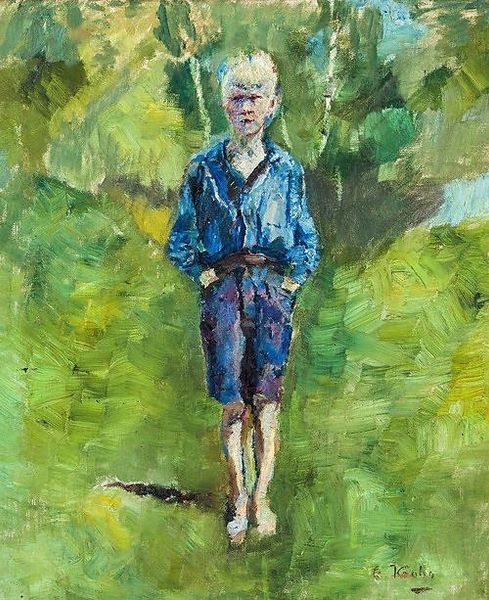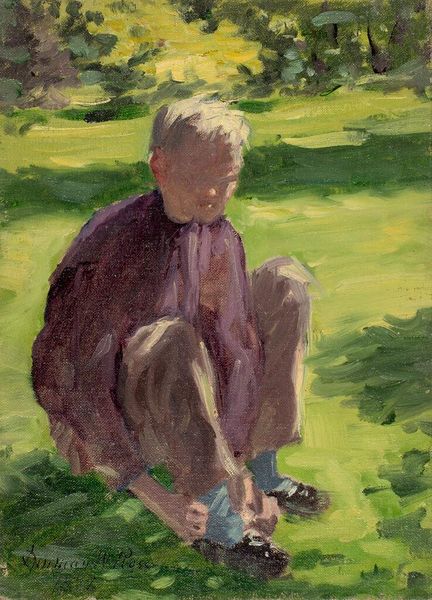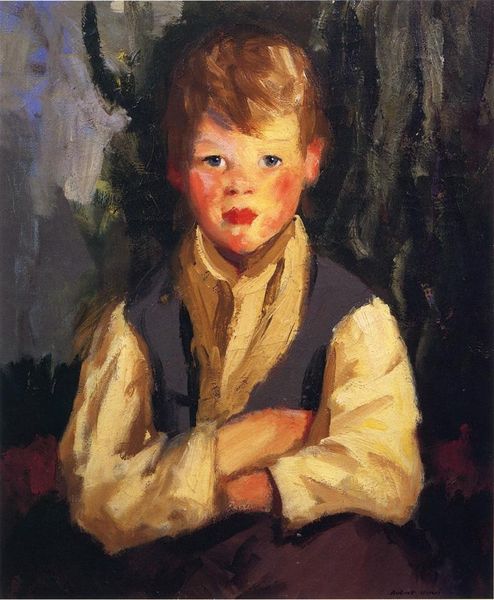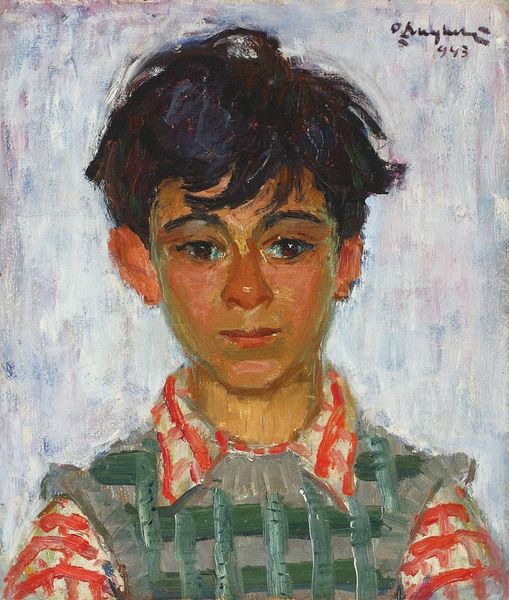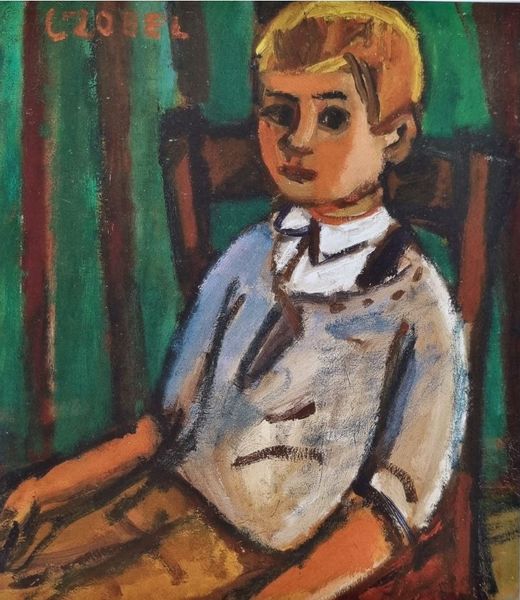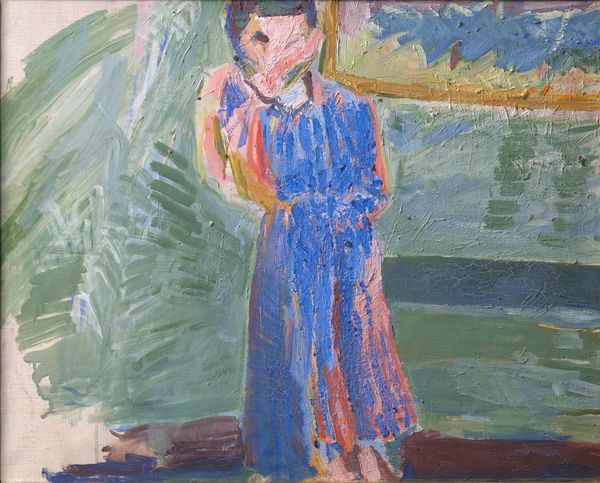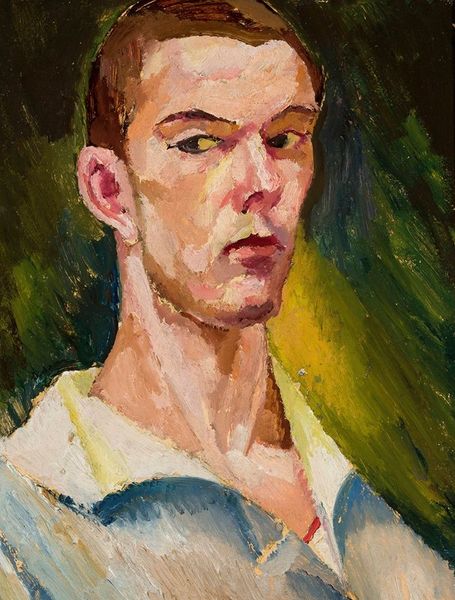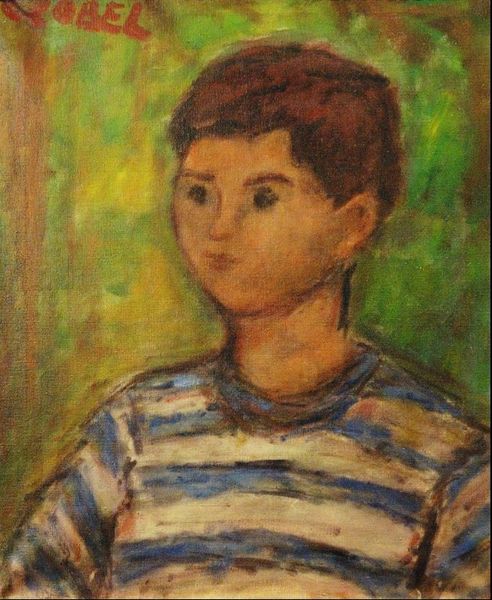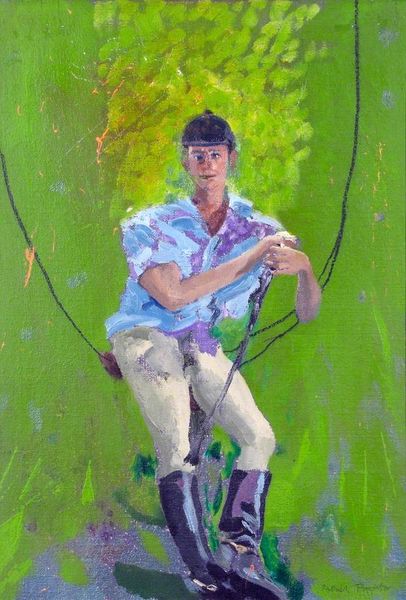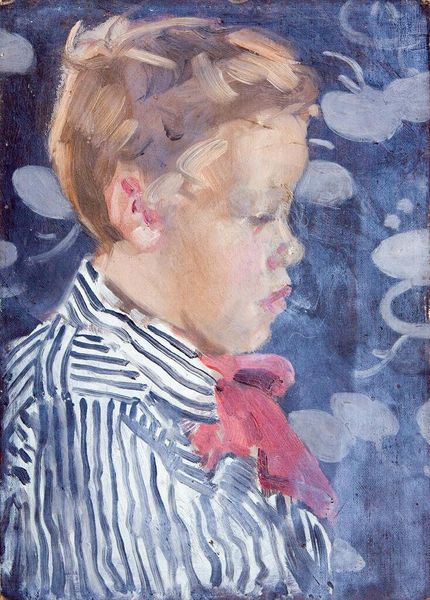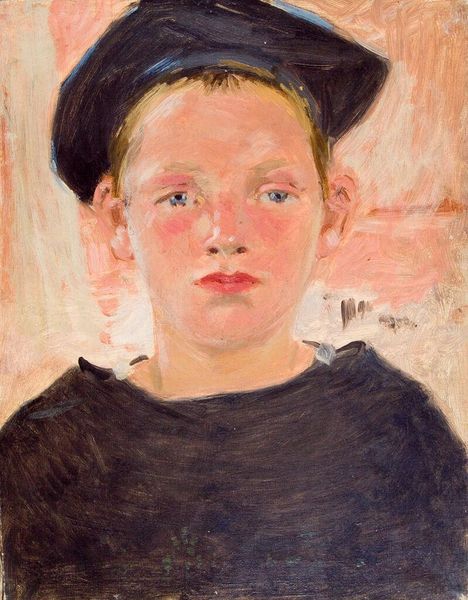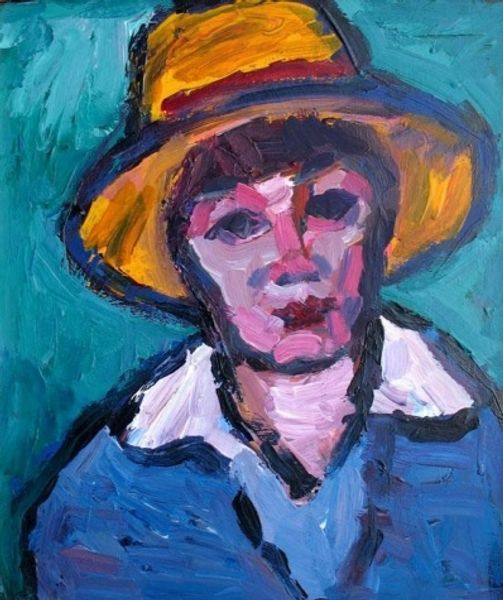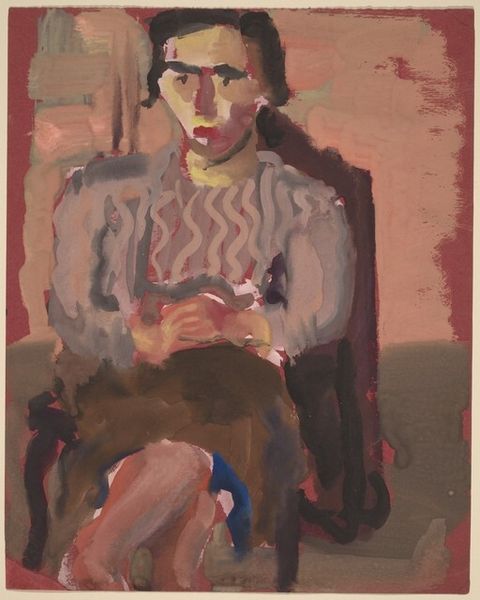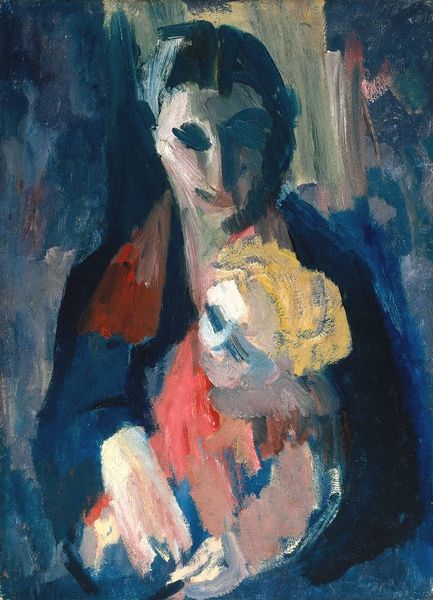
Copyright: Octav Angheluta,Fair Use
Curator: Looking at Octav Angheluta's "Antonel" from 1946, what are your initial thoughts? Editor: Well, it's certainly striking! The strong yellow background makes the figure almost jump out. There's a looseness to the brushwork that's immediately apparent. It gives the piece an unfinished, almost fleeting quality. Curator: The texture comes from the thick application of oil paint; it invites questions about Angheluta's process, and the physicality involved. Think of the accessibility of oil paint during this period. Could the quick and spontaneous look suggest material shortages affecting more traditional methods? Editor: That's a fascinating point. The context of post-war Romania definitely informs the reading of this portrait. The boy's somewhat vacant stare, combined with his simple clothing, speaks volumes about the period's austerity. The lack of specific detail forces viewers to consider the realities many children faced at the time. Curator: Exactly. The clothing, his makeshift fishing rod; how the social environment impacted what was available, what was deemed acceptable. Were there limitations on the availability of art supplies influencing Angheluta’s choice of painting, and these broader brushstrokes, to create "Antonel?" The child's agency seems somewhat limited. Editor: Perhaps "Antonel" also represents a hope for the future. Children, in art and in society, are frequently symbols of rebirth and new possibilities. The yellow could even be a carefully considered symbol of optimism amidst turmoil, designed to encourage a particular reading from a war-weary public. Curator: Yes, but if you look at how children's images were leveraged in political narratives during the post-war rebuilding efforts, this portrait almost feels subtly rebellious. The lack of idealization sets it apart from more propagandistic images. Editor: I see your point. There's a melancholy here that those overtly political works wouldn't dare suggest. It's a nuanced piece, resisting easy categorization. Curator: Exactly. Examining Angheluta's choices reveals a commentary not just on a specific boy, but on the materials and making in a transformed society. Editor: Absolutely, and situating the work historically allows us to consider how representations of childhood functioned within a society undergoing massive political and social upheaval. "Antonel" becomes a lens through which we can view a very specific historical moment.
Comments
No comments
Be the first to comment and join the conversation on the ultimate creative platform.
